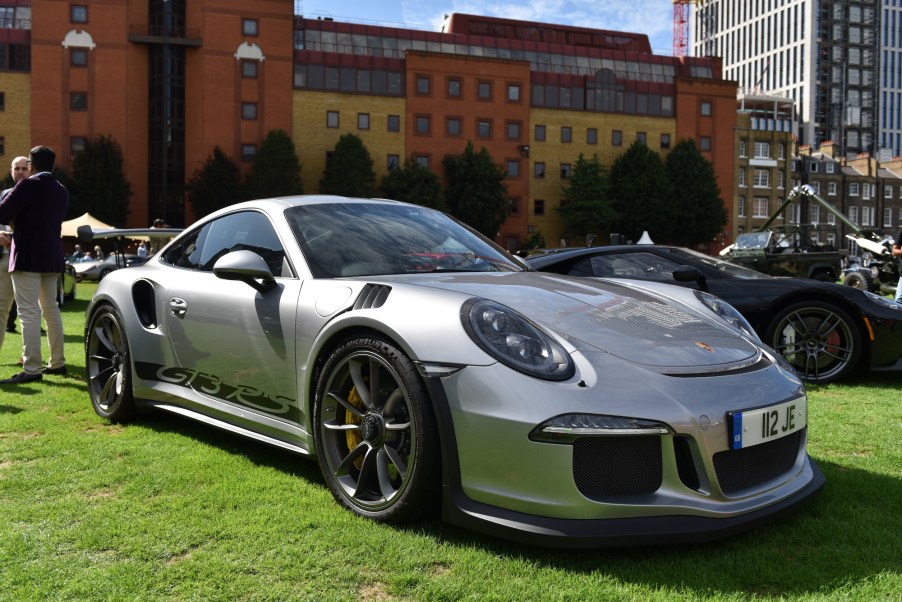
2016 Porsche 911 GT3 RS’s Engine Could Actually Hurt Your Ears
Appearance and performance may be top of mind when you’re car shopping. But for many enthusiasts, engine roar also plays an integral role in the overall ride experience. The 2016 Porsche 911 GT3 RS hits startlingly high sound levels. In fact, the German sports car appears in Car and Driver’s “The Loudest Cars Ever Tested From Every Segment.”
So, exactly how loud is this car, and what makes it so noisy?
The immense noise of the 2016 Porsche 911 GT3 RS
Car and Driver ranks the 2016 Porsche 911 GT3 RS the loudest coupe, stating that “aurally, it’s in a different league.” At full speed, the RS hits 108 decibels inside the cabin. For context, a normal conversation typically measures about 60 decibels, and city traffic measures 80 to 85 decibels, according to the CDC.
Although the 911 GT3 RS’s noise is certainly impressive, it could also damage your hearing if your unprotected ears are exposed to it for long periods of time. Decibel levels of 108 are similar to the noise you would experience in a nightclub or at a concert and just slightly quieter than someone shouting directly into your ear. The CDC says 105 to 110 decibels is loud enough to cause hearing loss in five minutes or less.
Why is this Porsche 911 so loud?
According to Car and Driver, the Porsche 911 GT3 RS’s engine “has an intensely quick-to-rev nature” and a muffler that “emits an otherworldly wail” when it hits top rpm. The speed with which the engine revs is partially due to its connecting rods, crafted from lightweight titanium material.
CD’s reviewers also surmise the automaker removed some sound-deadening material to reduce the car’s weight, unintentionally creating increased cabin noise. The sound at top speeds is so loud that test drivers say they feel it reverberate through the car and even rattle their skulls.
This cabin noise level is unlikely to occur without at least some sound deadening removed. According to Car and Driver, even similarly powerful vehicles don’t reach this noise level. The 2016 Porsche 911 GT3 RS is over twice as loud as a Ferrari 458 and more than four times louder than a Dodge Challenger Hellcat.
How this vehicle performs
A used 2016 Porsche 911 GT3 RS lists for about $165,000, Edmunds reports. The most performance-oriented model in the Porsche 911 lineup, the GT3 RS packs a 4.0-liter flat-six engine. It can harness a whopping 500 hp.
Porsche designed the RS to perform well on the track. In addition to eliminating superfluous cabin materials, the automaker can also remove the HVAC system and stereo to lighten the vehicle.
Additionally, the RS also has lightweight plastic body panels reinforced with carbon fiber. It features a larger engine than other 911 models and has several body modifications, including carbon-ceramic brakes and extra vents.
These modifications mean the RS offers striking performance stats. It can roar from 0 to 60 mph in just 3.0 seconds and complete the quarter-mile in 11.1 seconds, Car and Driver reports. But despite these impressive numbers, Car and Driver still found that similarly priced rivals — such as the Ferrari 488GTB — felt more powerful and exciting to drive.
All in all, the 2016 Porsche 911 GT3 RS is certainly a striking vehicle. However, though it may be fun to drive for brief periods, its extraordinary noise levels might not make it the best choice for frequent unless you wear ear protection.


